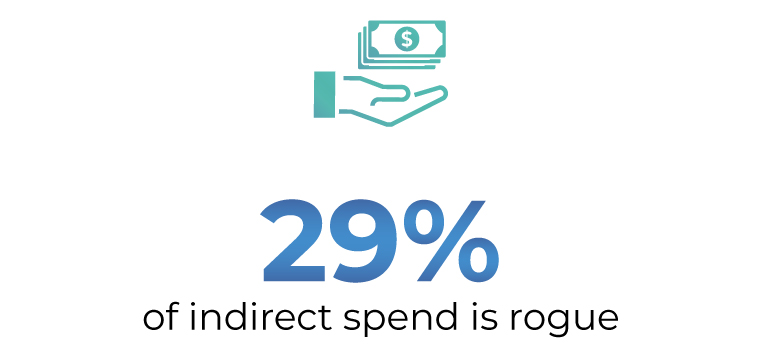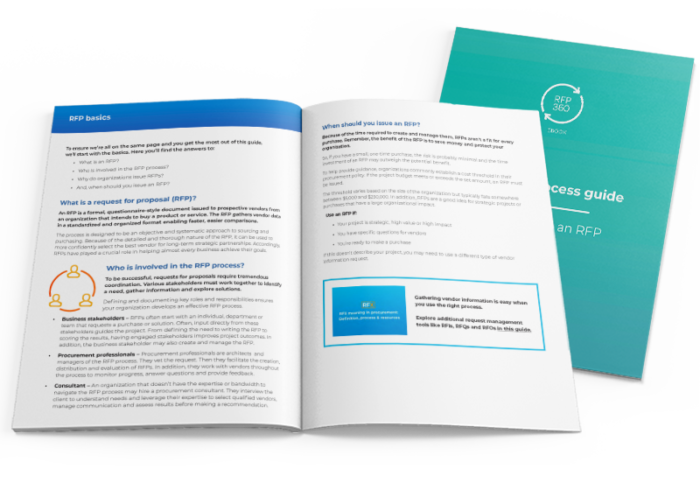Being a procurement manager isn’t always easy. But the role is uniquely rewarding, always interesting and crucial to a business’s success. Indeed, as global economic conditions change and evolve, the importance of hiring skilled procurement managers becomes clearer than ever.
In essence, procurement teams act as a strategic liaison between stakeholders who have purchasing needs and eager vendors looking to partner with the business. They manage organizational spend, maximize the value of vendor partnerships and mitigate potential third-party risks.
There’s no doubt that being a successful procurement manager takes a special set of skills. If you’re interested in the position or looking for resources to advance your career, you’ve come to the right place.
In this post, I’ll offer an overview of the procurement manager role. To begin, I’ll define exactly what a procurement manager is, their responsibilities and the skills required for success. Then, I’ll provide a look at common challenges they face. Finally, I’ll share a list of helpful resources for aspiring and advancing procurement professionals.
What is a procurement manager?
A procurement manager is the person responsible for sourcing and buying products and services for their company. The role is sometimes also called a purchasing manager.
Benefits of a career in procurement
If you’re someone who likes working with people, enjoys creative problem solving and thrives when meeting new challenges, a career in procurement could be a good fit for you.
Connect with colleagues and vendors
Procurement managers work with internal stakeholders and vendors daily. So they build impressive networks and spend their time collaborating, negotiating and advocating for their organization.
A big-picture perspective
When a stakeholder faces a challenge and they need to make a purchase to solve it, they come to procurement. Because procurement managers work across departments and with peers at all levels, they have a unique, big-picture view of the organization that enables them to act strategically.
Variety in the day-to-day
Roles in procurement have a tremendous amount of variety. For example, one day you may conduct research to write an RFP for software. Then, the next day you may manage the vendor onboarding process. It’s never the same day twice. And, it’s never boring.
Stability
As organizations grow, so too does their need to select the right vendors, maximize value and minimize risk. In short, businesses will always need professionals with procurement skills and insights.
Career growth
Once you start in procurement, the industry offers lots of room for growth. Titles vary greatly from one organization to the next but roles in the field range from entry-level to executive.
Procurement team titles
There are a lot of different roles in the world of procurement. As teams grow, the roles often become more specialized. However, the procurement manager title is the most common.
Entry-level procurement titles
- Buyer
- Procurement analyst
- Purchasing agent
- Procurement assistant
- Purchasing coordinator
- Procurement associate
Mid-level procurement titles
- Procurement manager
- Procurement coordinator
- Indirect spend manager
- Direct spend manager
- Procurement agent
- Category manager
- Strategic sourcing manager
- Senior buyer
- Supply chain manager
Senior-level procurement titles
- Head of procurement
- Supply chain director
- Procurement director
- Vice president of procurement
- Chief procurement officer (CPO)
Procurement team structure
In large businesses, the procurement manager leads a team of procurement agents and specialists. Often, the role reports to a chief procurement officer (CPO). On the other hand, in small- and medium-sized businesses, the procurement manager is often a department of one. In this case, they typically report to the chief operations officer (COO) or chief finance officer (CFO). Regardless of size, procurement teams must work closely with the finance, operations and legal departments.

Procurement manager role and responsibilities
Overall, a procurement manager’s goal is to manage organizational spend by maximizing vendor value while minimizing risk. Understandably, there are lots of practices and processes that procurement managers use to accomplish that goal.
One of the primary responsibilities of procurement managers is vendor selection. To do this, procurement managers use the request for proposal (RFP) process.
RFPs enable you to gather large amounts of vendor data and make informed decisions. By organizing and standardizing vendor data, you ensure that your selection process is fair, transparent and data based.
To explore the RFP process, a cornerstone of the procurement manager’s toolkit, download this ebook: The RFP process guide.
Additionally, procurement manager responsibilities include ensuring procurement policy compliance, reviewing past purchases and existing vendor partnerships. The vendor performance evaluation process measures effectiveness, compliance and ultimately, the business’s return on investment (ROI).
In the last few years, the role of the procurement department has been changing and expanding. Traditionally, the role focused on simply obtaining goods to meet business needs. However, an increasing number of companies now recognize the insight and value procurement managers hold. In light of their ability to reduce costs, improve outcomes and identify strategic partnerships, it should come as no surprise.
In fact, an article from the University of Michigan comments on this trend saying:
“In-house procurement managers are becoming more specialized, as well. New technology enables them to take on more complex and strategic roles in many organizations. They are becoming more empowered to analyze business operations, identify potential problems and recommend solutions.”
Accordingly, the job duties and influence of procurement managers have expanded.
Procurement manager responsibilities
- Solution and product research
- Inventory management
- Procurement lifecycle optimization
- Category management
- Spend management
- RFP management
- Vendor ROI analysis
- Supplier selection
- Risk and compliance management
- Supplier relationship management
- Vendor negotiation
- Procurement data analytics
Procurement manager skills
To be successful in the rapidly evolving procurement industry, procurement managers must hone their skill set. The top seven skills (in no particular order) required in the field of procurement are:
- Digital aptitude – Knowledge of emerging technologies like RFP automation
- Data management and analytics – Ability to gather, clean and interpret data
- Emotional intelligence – Understanding of your own and others’ motivations and emotions
- Negotiation – Ability to advocate fairly for your organization’s best interests
- Networking – Aptitude for connecting with others and building relationships
- Social responsibility – Understanding procurement’s role in influencing social change
- Risk management – Ability to identify, minimize and mitigate threats to the business
Want to dig deeper into these key skills and explore resources? Check out this blog: Top 7 procurement skills for advancement and success.
Procurement manager job description examples
Most job descriptions for procurement managers have some combination of the responsibilities and skills listed above. But, it’s always helpful to see it in action. Here are a few sample procurement manager job descriptions.
3 challenges facing procurement professionals
Rogue spend and a lack of business engagement
To be effective, procurement managers must collaborate with every department. Unfortunately, uncertainty or skepticism about procurement’s role often makes winning buy-in from the business a challenge. The result? Rogue spend.
Also known as dark purchasing, invisible spend, tail spend, unmanaged spend or maverick spend, rogue spend is any purchase made outside of the procurement process. According to a 2016 report from Hackett Group, almost 29 percent of indirect spend is off-contract or rogue spend. These items are difficult to account for and open the business up to risk.

To enhance stakeholder engagement consider improving process transparency, being proactive and engaging with stakeholders early. Ultimately, involving stakeholders in the solution builds trust and credibility. So, it’s wise to include their input in procurement intake, project kick off and RFP scoring.
Lack of technology resulting in a time-consuming process.
Even in businesses where digital transformation initiatives are widely embraced, technology seems slow to arrive in the procurement department. In the 2018 CPO Survey Report, Deloitte summarized the challenges saying this:
“Despite recognising digital technologies, their impact and imminent uses, few organisations appear to be progressing at the rate that their c-suite executives consider necessary for achieving overall goals. Indeed, in the majority of areas, the level of impact has declined and the forecast application of new technologies is low.”
While undertaking software and IT sourcing for other departments is a big part of a procurement manager’s job, they may still be working through a largely manual process. Certainly, the irony of this isn’t lost on us.
A common source of frustration for procurement managers and internal stakeholders alike is the length of the procurement cycle. Typically, procurement projects are a result of an ongoing problem that is keeping the business from meeting their goals. Understandably, in this situation, delays and inefficiency are particularly unwelcome. For example, common delays include lengthy requirements research, inefficient vendor communication, a lack of collaboration in proposal evaluation, manual scoring or roadblocks in contract negotiation.
Technology solves many of these issues. At the same time, it empowers better insights, transparency, workflows and RFP automation. In addition, valuable data from a digitized process can be reviewed for optimization opportunities.
Strategic sourcing and supplier selection
As businesses begin to understand the value the procurement department can deliver, the pressure on procurement managers increases. Unsurprisingly, strategic sourcing has grown in popularity to help meet this challenge. The practice focuses on selecting long-term partners, rather than transactional suppliers. Longer, more productive relationships with vendors mean fewer procurement projects and lower costs.
Strategic sourcing starts with picking the right vendor. Often, RFPs compare a variety of similar vendors’ qualifications, experience and capabilities. Then, procurement managers evaluate and score the results. Ideally they use weighted RFP scoring to ensure the company’s highest priorities are met. Again, if performed manually, weighted scoring can be a time-consuming process.
Selecting the right vendor isn’t the end of the procurement team’s duties. Indeed, managing vendor relationships is an underappreciated and highly-valuable skill. A procurement manager continually manages and evaluates the performance of each vendor to ensure the partnership remains mutually beneficial. Luckily, vendor profiles can help organize and centralize crucial vendor information for easy reference and tracking.
Technology and resources for procurement managers
To achieve their goals, procurement managers may use a number of tools, processes and resources.
Certainly there is a lot of great procurement technology available. Solutions target a range of procurement functions from RFPs to vendor management. When seeking procurement and strategic sourcing solutions, G2 and Capterra are great places to start your research.
Software used by procurement managers
- RFP management software
- Inventory management software
- Contract and vendor management platforms
- Category management systems
- Data analysis and benchmarking software
- Spend management tools
Associations and groups for procurement professionals
There are many associations and groups focused on procurement. In addition to the nation-wide groups listed below, there are also specialty organizations for many industries. For example, government, education and construction sector purchasing.
- Institute of Supply Management
- American Purchasing Society
- Next Level Purchasing Association
- Chartered Institute of Procurement and Supply
Procurement thought leadership and networks
Additional procurement manager education and training resources
If you’re still looking for more information about procurement and the RFP process, explore these additional resources from the RFP360 blog.

